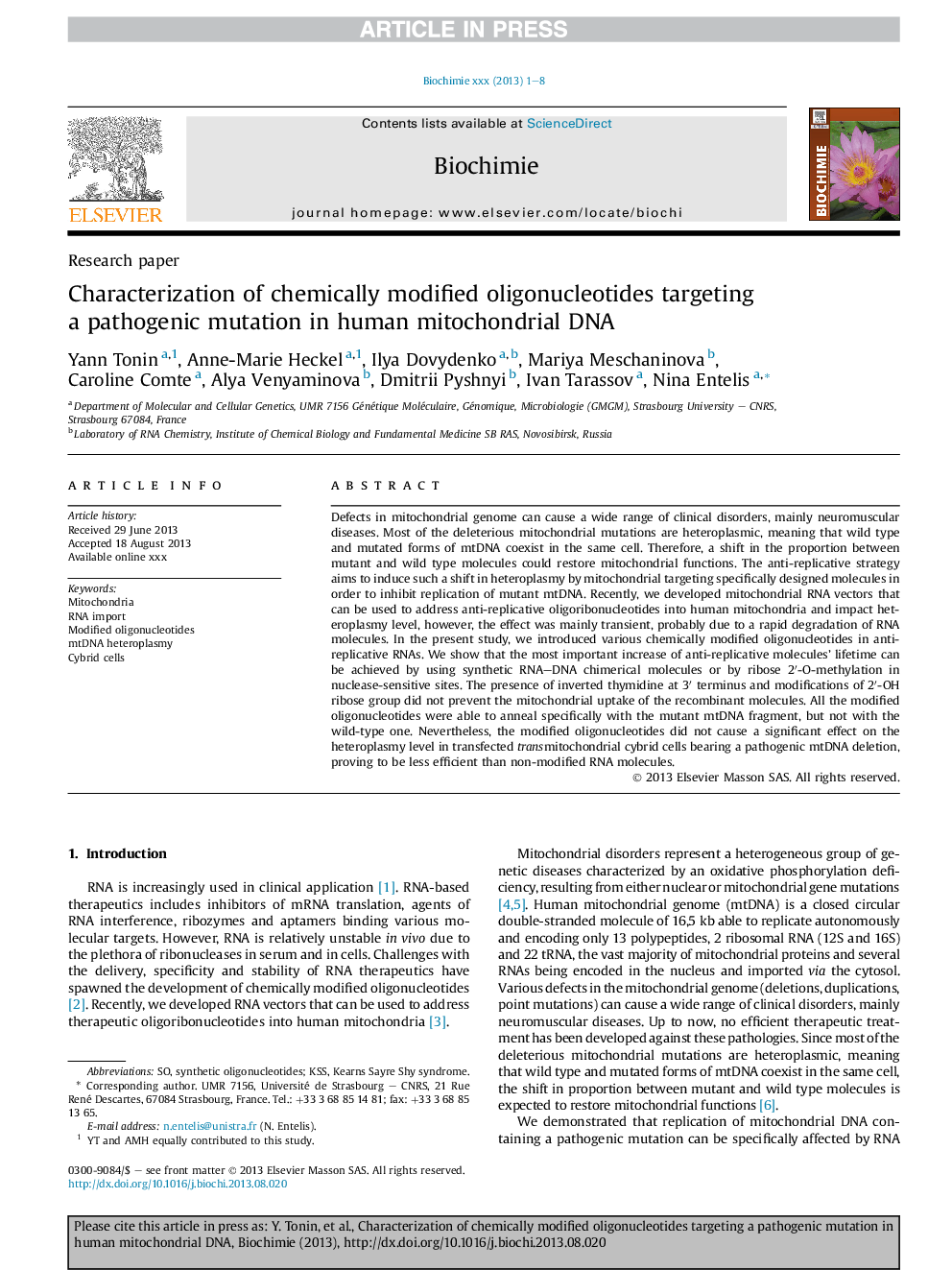| Article ID | Journal | Published Year | Pages | File Type |
|---|---|---|---|---|
| 8305580 | Biochimie | 2014 | 8 Pages |
Abstract
Defects in mitochondrial genome can cause a wide range of clinical disorders, mainly neuromuscular diseases. Most of the deleterious mitochondrial mutations are heteroplasmic, meaning that wild type and mutated forms of mtDNA coexist in the same cell. Therefore, a shift in the proportion between mutant and wild type molecules could restore mitochondrial functions. The anti-replicative strategy aims to induce such a shift in heteroplasmy by mitochondrial targeting specifically designed molecules in order to inhibit replication of mutant mtDNA. Recently, we developed mitochondrial RNA vectors that can be used to address anti-replicative oligoribonucleotides into human mitochondria and impact heteroplasmy level, however, the effect was mainly transient, probably due to a rapid degradation of RNA molecules. In the present study, we introduced various chemically modified oligonucleotides in anti-replicative RNAs. We show that the most important increase of anti-replicative molecules' lifetime can be achieved by using synthetic RNA-DNA chimerical molecules or by ribose 2â²-O-methylation in nuclease-sensitive sites. The presence of inverted thymidine at 3â² terminus and modifications of 2â²-OH ribose group did not prevent the mitochondrial uptake of the recombinant molecules. All the modified oligonucleotides were able to anneal specifically with the mutant mtDNA fragment, but not with the wild-type one. Nevertheless, the modified oligonucleotides did not cause a significant effect on the heteroplasmy level in transfected transmitochondrial cybrid cells bearing a pathogenic mtDNA deletion, proving to be less efficient than non-modified RNA molecules.
Related Topics
Life Sciences
Biochemistry, Genetics and Molecular Biology
Biochemistry
Authors
Yann Tonin, Anne-Marie Heckel, Ilya Dovydenko, Mariya Meschaninova, Caroline Comte, Alya Venyaminova, Dmitrii Pyshnyi, Ivan Tarassov, Nina Entelis,
